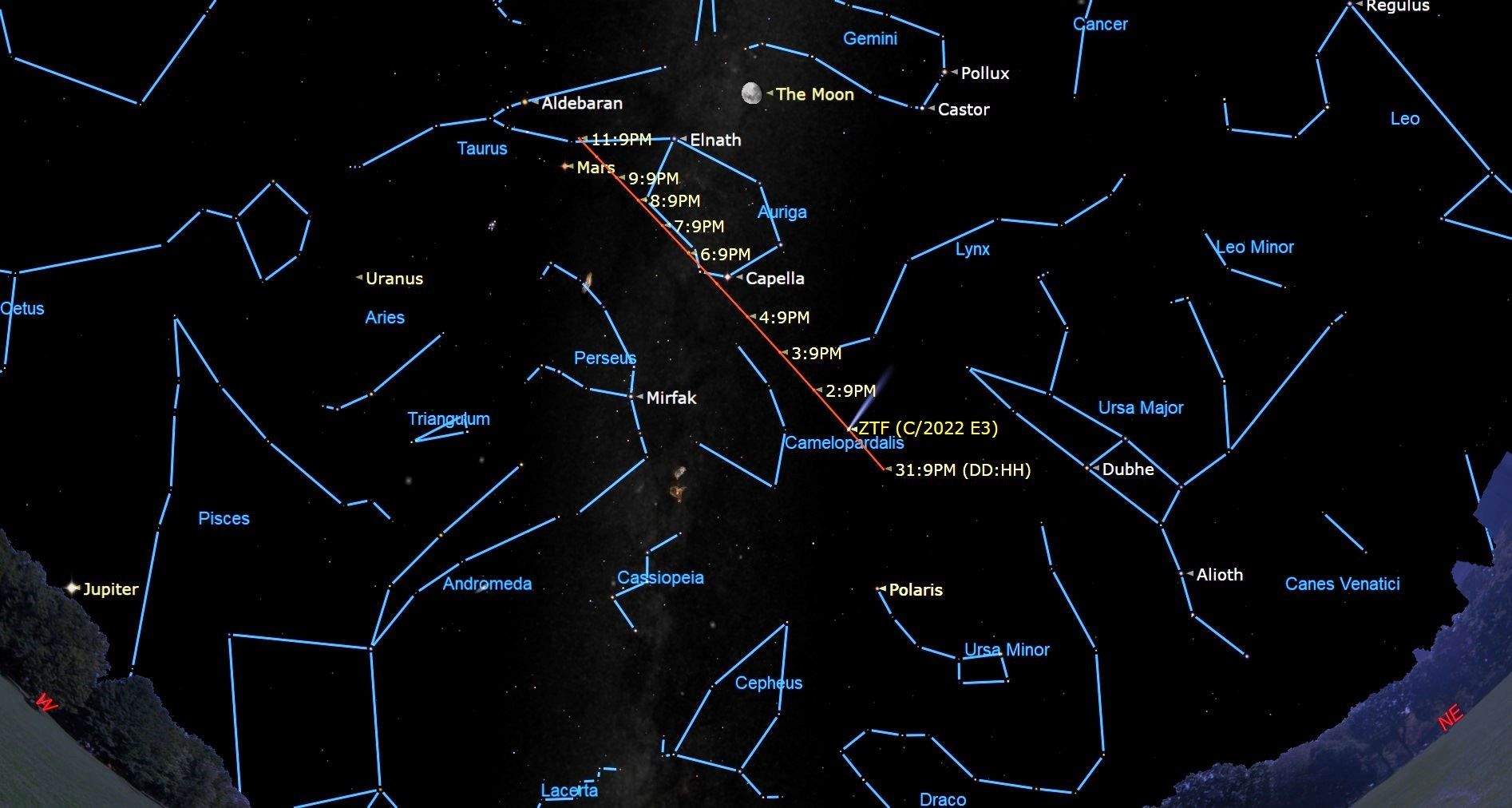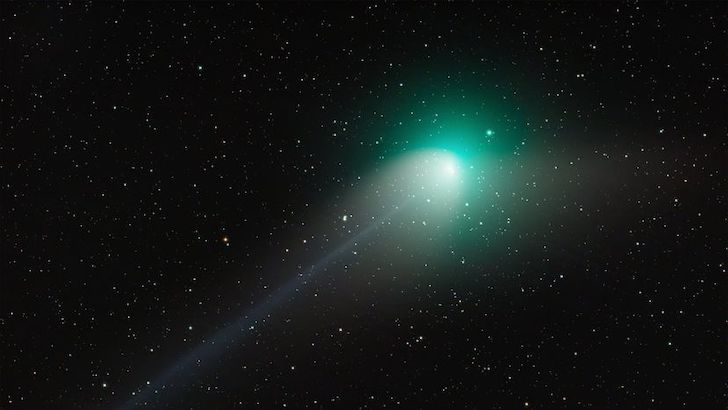Already flying above Kent, the UK can witness a “once in a lifetime” green comet on February 1st 2023 – last seen in the Stone Age
At 4 am on February 1st 2023, the E3 comet – tagged the ‘green comet’ because of its glow – will be at its closest point to Earth, only 42 million kilometres from our planet.
This comet has travelled around 4.5 trillion km over the last 50,000 years, reaching its closest point to Earth – known as its ‘perigee’ point – to then be potentially never seen again.
The Met Office have noted the best time to see this unique comet in the UK will be Wednesday morning at 4 am, preferably somewhere dark, where light pollution is minimal.
Why is this comet so significant?
Unlike frequent comets, like Halley’s which passes every 76 years, this one is incredibly rare. It most likely also derives from a collection of icy body clouds which are thought to be from the very distant part of our solar system.
Scientists believe this because the orbits of long-period comets are so long, leading them to assume it is from the very furthest part of the solar system.
The orbit of this long-period comet is so long, scientists believe it is from the very furthest part of the solar system
Said to have travelled from the Oort cloud, it is believed this cloud is a giant spherical shell surrounding the rest of the solar system. The distance from the Sun to the Oort Cloud is so enormous that it’s not even described in the units of miles or kilometres, but in astronomical units.
The best way to picture this Oort cloud is like a big bubble made of icy pieces of space debris the sizes of mountains, potentially containing billions, or even trillions, of objects.
Another thing that makes the comet special is its green glow, thought to have come from an interaction between light from the sun and diatomic carbon. When diatomic carbon is excited by ultraviolet rays, it gives off light, giving the green coma surrounding the nucleus of the comet.
What is the green comet’s direction in space?
From the 30th to the 31st of January, it headed near the star Polaris constellation. On the 1st of February, it will then be at its closest point to Earth, appearing bigger and brighter, it will be then near the constellation Camelopardalis.
Finally, on its last days of visibility, the 2nd to the 4th of February, it will be between the constellations Auriga and Camelopardalis.












